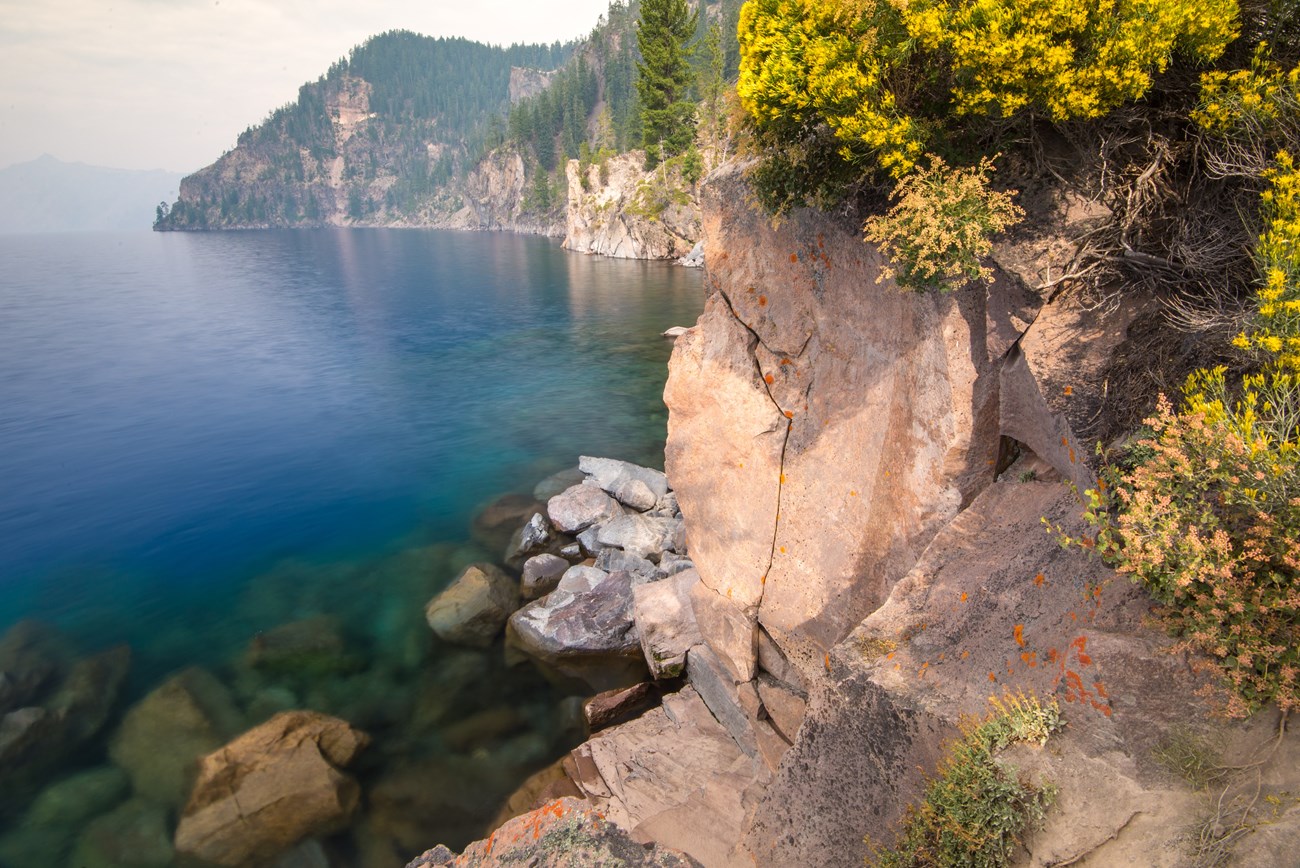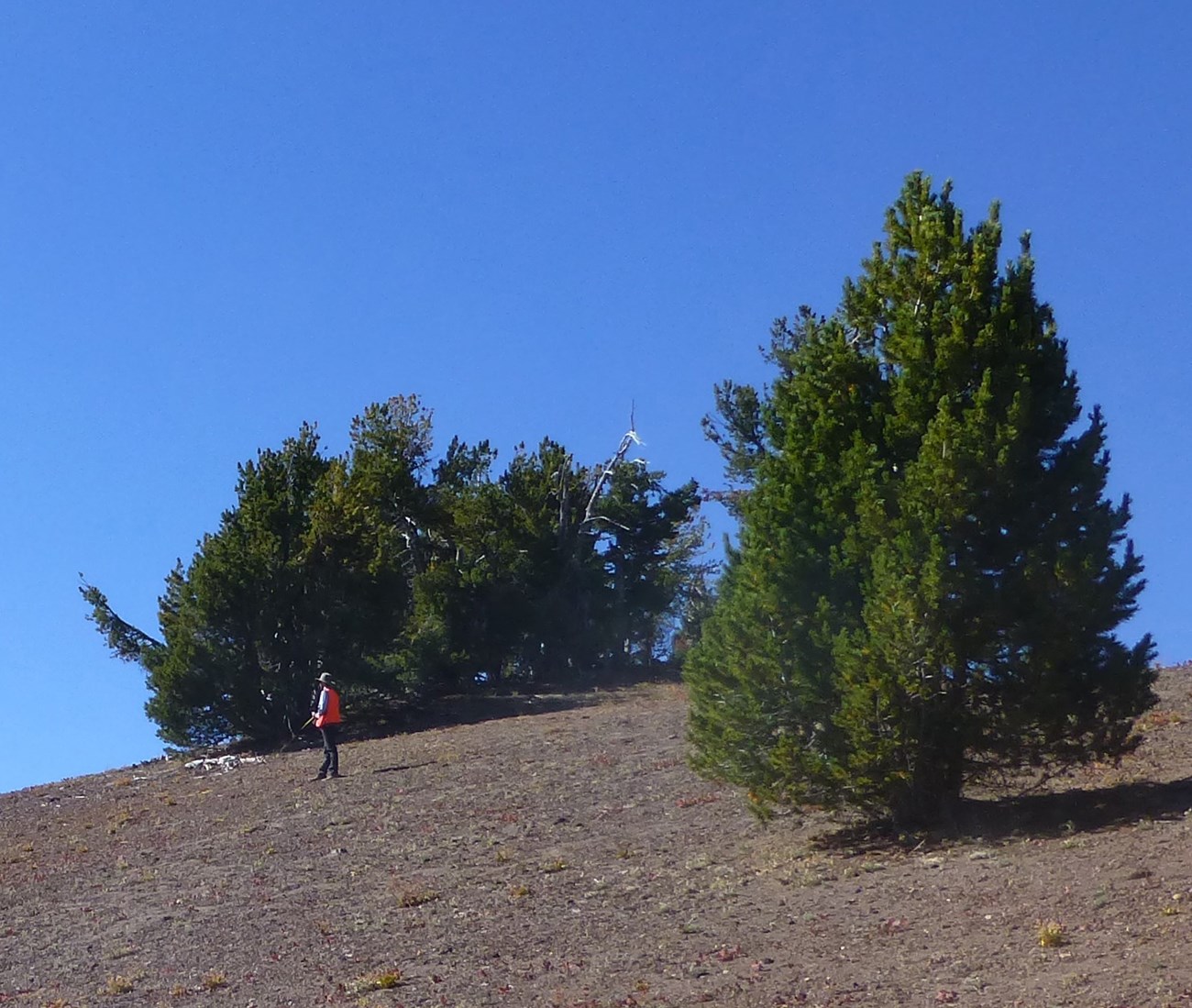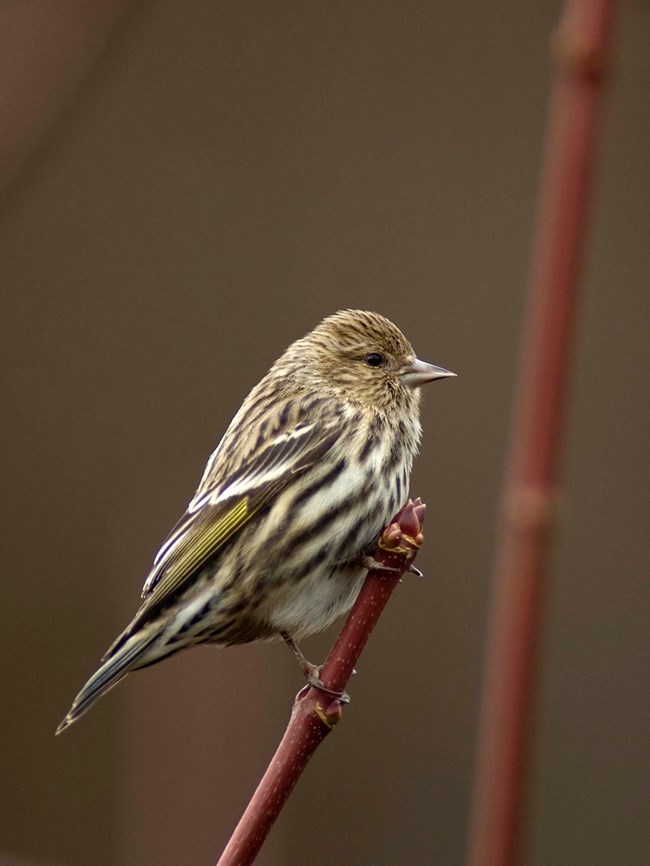Last updated: August 28, 2024
Article
Checking Crater Lake's Vital Signs

Jessica Weinberg McClosky
Klamath Network Science
National parks are the guardians of our unique American natural and cultural history. But perhaps more than ever before, parks exist in a rapidly changing landscape. Urban growth, replacement of native species by exotics, air and water pollution, increasing visitor use, and climate change all impact the natural web of life. This leads us to ask:
How healthy are our parks?
How are they changing?
To answer these questions, the National Park Service grouped parks into 32 Inventory and Monitoring Networks. In 2010 at Lassen Volcanic and nearby parks, the Klamath Network began monitoring selected natural resources, called “vital signs,” that serve as indicators of park condition. Through repeated visits to fixed sampling sites over time, we track status and trends in these indicators to support park managers’ efforts to make science-based management decisions.
What Do We Monitor at Crater Lake National Park?
Water Quality and Aquatic Life

NPS
Wet areas abound with life, from the tiny aquatic insects that feed salamanders and bluebirds, to the lush greenery that feeds and shelters wildlife. Cascades frogs (Rana cascadae) breed in the shallow, nutrient-rich water of Crater Lake’s high mountain ponds. Purebred native bull trout (Salvelinus confluentus), which once hybridized with nonnative brook trout (Salvelinus fontinalis) and were outcompeted by nonnative brown trout (Salmo trutta), are returning to the park’s cold, clean streams. But the park’s water is vulnerable to climate change and other stressors, like the ever-present threat of invasive species or diseases entering the park. We sample fish, aquatic organisms, streamside plants, and water chemistry to track the health of the park’s ponds and streams.

© Gary Nafis (CC BY-NC-ND3.0)
Some resources we measure:
- water quality, like oxygen, pH, and turbidity
- water chemistry, like nutrients (nitrogen, phosphorous) and salts
- water quantity, like streamflow and the depth of ponds
- habitat features, like streamside vegetation and in-stream woody debris
- biodiversity, including fish, amphibians, algae, and aquatic macroinvertebrates (stream bugs)
Learn more and find recent publications:
https://www.nps.gov/im/klmn/streams.htm
https://www.nps.gov/im/klmn/lakes.htm
Land Plants and Early Detection of Invasive Species

NPS
Crater Lake National Park contains a wide variety of native plant species, including some that are unique to the region. Its slopes are blanketed with old growth stands of conifers interspersed with meadows and talus cliffs. Wet areas, even at high elevations, support high plant diversity, including the bright yellow arrowleaf ragwort (Senecio triangularis). Plants offer food, shelter, and breeding habitat for insects and wildlife. But disturbances, like invasive species and climate change, can ripple through ecosystems. Climate change has altered fire regimes in the park, leading to larger, more frequent burns. To track vegetation community health, we monitor plant abundance and variety. We also track woody debris conditions closely tied to fire.

NPS
While native plants dominate most of our vegetation plots, nonnatives (plants that evolved in a different place), like cheatgrass (Bromus tectorum) and bull thistle (Cirsium vulgare), do occur in the park. Because they can outcompete native plants, monopolize water, and change the soil, we survey park travel corridors, like roads and trails, where nonnatives most commonly appear, to keep managers informed.
Some resources we measure:
-
cover and diversity of native plants
-
cover and diversity of nonnative plants
-
regeneration, by tree seedling counts
-
mortality, by counting recently dead trees
-
fuel availability, by measuring woody debris and litter and duff depths
- live tree characteristics, like volume (basal area), canopy health, and height
Learn more and find recent publications:
https://www.nps.gov/im/klmn/vegetation.htm
https://www.nps.gov/im/klmn/invasives.htm
Whitebark Pine

NPS
The iconic whitebark pine (Pinus albicaulis) weathers the harsh, subalpine climate at the highest elevations in the park. Its high-energy seeds feed Clark’s nutcrackers (Nucifraga columbiana) and squirrels. Its roots stabilize the thin rocky soil. Its shady branches prolong the snowmelt that sustains Crater Lake’s streams. But white pine blister rust, a disease caused by a nonnative fungus, and mountain pine beetles (Dendroctonus ponderosae) have taken a toll on this foundation species. In 2020, whitebark pine was proposed for listing as threatened under the Endangered Species Act. We monitor tree conditions, blister rust infection, and beetle damage to support park management and larger-scale research throughout the West to protect this imperiled species.
Some resources we measure:
-
tree size (diameter at breast height), height, and condition (live vs dead)
-
abundance of seedlings and cone-bearing trees
- mistletoe and blister rust infection; mountain pine beetle infestation
Learn more and find recent publications:

NPS
Birds
Birds delight us with song and beauty, but also with scientific data! Easily detected, they are good indicators of ecological health because they respond quickly to environmental change. Critical to park health, they spread seed and pollen across the land. With the Klamath Bird Observatory, we monitor landbird communities in the park. One common summer bird is the noisy pine siskin. You may spot subtle patches of yellow on its dark-brown streaked body as it forages for seeds, especially the seeds of conifer cones, in open forests. Our bird monitoring tracks the distribution and health of park birds and adds to regional landbird projects, like the Avian Knowledge Network Northwest.
During the breeding season, we count birds along transects to determine
-
the variety of species present
- the relative abundance of each species in the park
Learn more and find recent publications:

More Information and Vital Sign Publications
Klamath Inventory and Monitoring Network
Download a printable pdf of this article.
Prepared by Sonya Daw and the Klamath Network staff.
